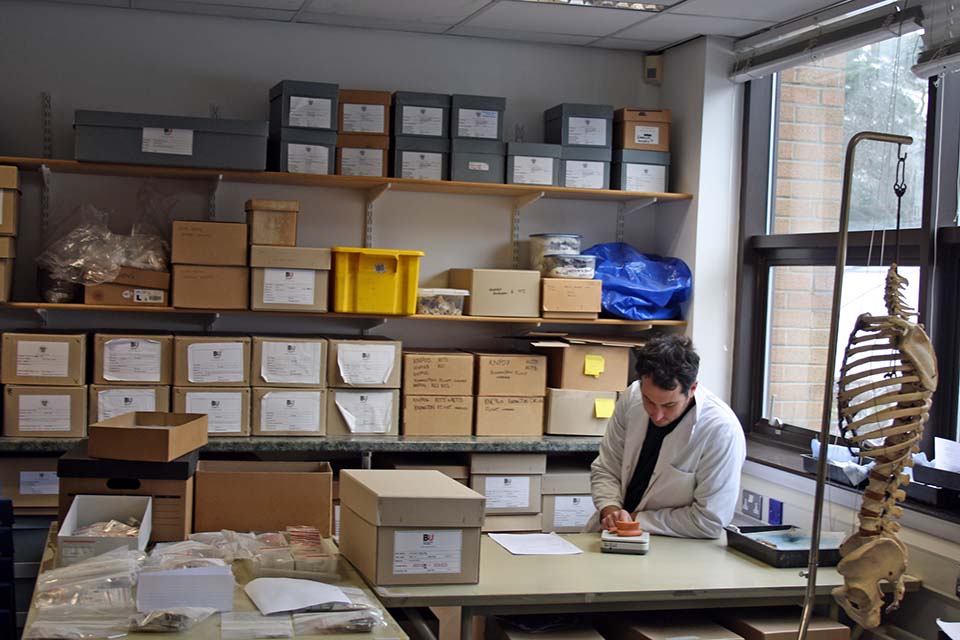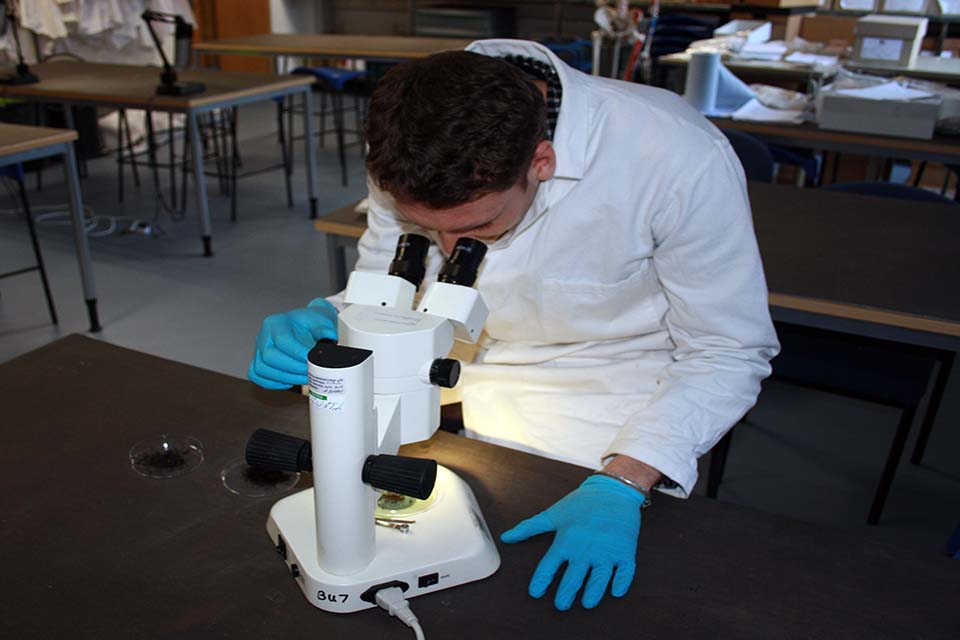 The busy start to the year means there is currently a lot going on in Bournemouth Archaeology’s post-excavation department. The spacious and well-equipped laboratory facilities at Bournemouth University are ideal for processing and analysing the different types of material brought back from archaeological fieldwork projects; from environmental samples, human remains, fragile items with specific conservation requirements to the more familiar bags of animal bones and pottery.
The busy start to the year means there is currently a lot going on in Bournemouth Archaeology’s post-excavation department. The spacious and well-equipped laboratory facilities at Bournemouth University are ideal for processing and analysing the different types of material brought back from archaeological fieldwork projects; from environmental samples, human remains, fragile items with specific conservation requirements to the more familiar bags of animal bones and pottery.
We use artefacts to date sites and tell us about their status and function. Often the most unassuming fragment of pottery can yield important information, especially if nothing else has been found. We are currently processing artefacts from a number of sites, and our trays contain a fascinating range of material culture, from Bronze Age struck flints to Roman pottery, an early 20th century cigarette packet and even a letter post-dated 1965. These last two artefacts have come from a historic building recording project, and although modern in comparison to the material we are used to dealing with they will help to date the many modifications the particular building has gone through during its lifetime.

Environmental samples provide a wealth of information. Bulk samples from excavations are the most common form of sample being dealt with by the department at any particular time. These samples are processed in flotation tanks; the flots (everything that floats – such as charred plant remains) and residues (everything else suspended in the soil – stones, snails and artefacts) can then be analysed to see what they contain. We have just started looking at some very interesting flots recovered from an Iron Age site near Bicester. The charred seeds and cereal grains which can be seen amongst the charcoal will be separated out and identified to tell us what was being grown and consumed on the site.
